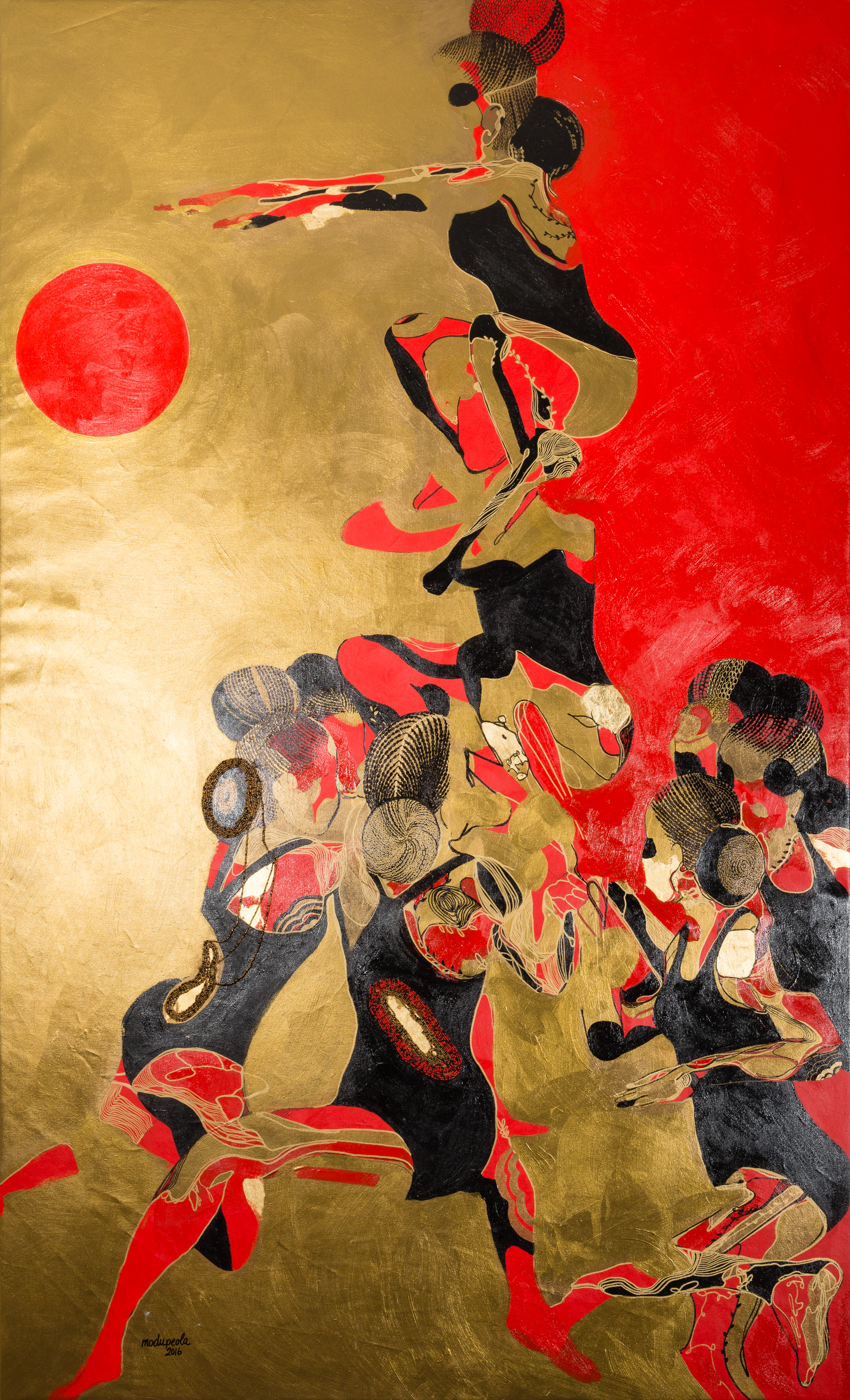Tagged: Please, Buy My Lot, Acrylic, Gold Leaf, Color Pencil, Oil and Ink on Burned Paper, 96" x 48", 2016
tagged (2015 - 2020)
These are interesting times to be a professional artist in Nigeria, and no doubt, in Africa. Having made the plunge into the art world six years ago, learning how to swim and navigate my way through this watery landscape has been an emotional and rewarding game of sorts. In response, I created the series Tagged (2015–17), where swimmers engage in a game to get a red ball, which symbolizes the red stickers placed on sold artworks. I have found this transactional assessment of an artwork’s value to be both an important method of validation and a trap, painting only a partial picture of what it means to thrive as a professional artist.
Last year, I read an article by Kenyan collagist and painter Wangechi Mutu, called “They Eat Because You Grow the Food.” The article describes Mutu’s path to becoming a professional artist and offers advice to younger artists about navigating the art world and recognizing one’s position in the food chain as the “growers of the food”:
“If I could go back in time, I would tell my younger self that everything is basically going to be OK. […] I would also have reminded myself that I hadn’t got to the point where I was emerging as an artist by chance; that I’d worked tremendously hard and made a lot of good decisions to arrive where I was.”
Mutu bares her misconceptions about the mentors and art communities she had assumed would automatically appear upon launching career. Rather, she advises, artists must do the hard work of building a community from scratch that supports and reflects their idiosyncrasies. Much like Rainer Maria Rilke’s Letters to a Young Poet, I often refer to, and have taken these words to heart as I mature as an artist.
In a similar spirit to Rilke and Mutu’s words of advice, I started a mentorship program called Dear Young Artist. I mentored a group of four emerging artists, focusing on the importance of long-term strategy (“staying in the pool!”) as well as things like finance and time- and relationship-management that artists often shy away from. It felt at times presumptuous to assume a role of a teacher, as one who is still young in their career and self-taught, but the relationship turned out to be mutually beneficial. I am now a something of a mentor to my artist assistants and they are in turn very generous with their support of my work and vision. Much like the concept of the Synchronized Swimmers (below), I actually feel like I’m building the kind of community Mutu referred to. And together, we are asking some important questions: what does it mean to be an African artist, a woman artist, a young artist? What are the keys to professionalism and success? Dear Young Artist also provides the name for a series of paintings in which I engage with these questions.

















